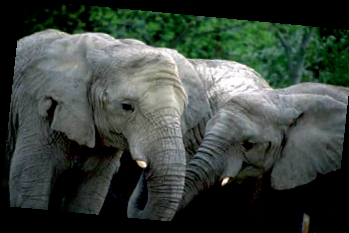Elephant Families
1- Elephants are said to value their families more than most animals. Elephant families have a matriarchal head, meaning that an older, experienced female elephant leads the herd. A family usually consists of a mother, her sisters, daughters and their babies (calves). Sometimes non-related elephants join to form families. Female family units range from three to twenty-five elephants. Sometimes herds of female elephants combine with groups of bull elephants to form larger clans.
2- Female elephants (cows) help look after each other’s calves. Babysitting other female’s calves is important for elephant development; young females learn how to look after the young, and the calves are shown how it’s done. The survival rate of a calf greatly increases when more females are present and willing to take care of it.
3- Elephants are known to develop strong, intimate bonds between friends and family members. There have been reports of elephants forming lifelong friendships with each other, and they even mourn the death of their loved ones. It is true that elephants walk in a line when on the move, for instance, while in search of food and water. The calves will sometimes hold on to their mother’s tails with their trunks to keep up, while other female elephants surround them to protect them from danger.
4- Adult male elephants live a mainly nomadic and solitary life. When a male elephant (bull) reaches puberty, around 12 to 15 years of age, he will gradually become more independent of his family until he breaks away completely, to either roam alone or find a loosely-knit group of male elephants to join. In herds of bulls, the strongest and most experienced elephants lead and protect the group.

